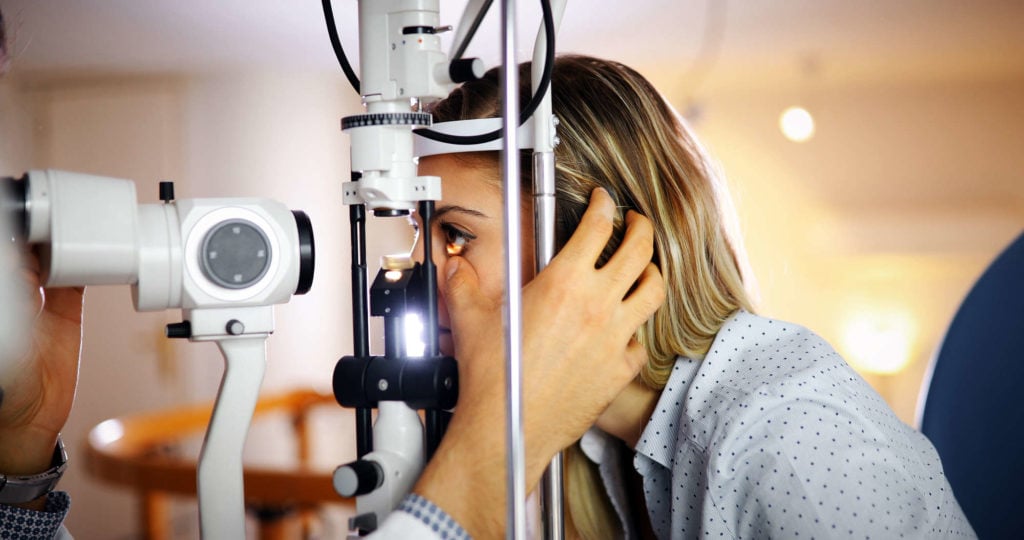Corneal collagen cross-linkage (CXL) is a therapeutic treatment of Keratoconus (KCS) to stabilise shape. It has been extensively investigated and epi-off CXL is considered the gold standard in treatment.


Corneal collagen cross-linkage (CXL) is the first and most effective treatment shown to stabilize KCS, it was developed in Switzerland in the late 90’s and was approved by NICE in the UK in 2009. It has been extensively investigated and epi-off CXL is considered the gold standard in treatment.
David Anderson has been performing CXL since 2010 and uses the Avedro KXL® system which is considered to be the most advanced platform for treating KCS with more than 400,000 treatments to date.

The cornea is made from collagen proteins layered over each other with bonds in-between to stabilize them called cross links. These cross links increase naturally with age and with ultra-violet light (UV-A) exposure and affect all proteins in the body. Using riboflavin (vitamin B2) eyedrops, combined with a set dose of UV-A these cross links are stimulated to form in large numbers, strengthening the cornea and reducing corneal flexibility preventing progression of the condition.
CXL is an outpatient procedure and you will be in the department for around an hour. Local anaesthetic eye drops will numb your eye. The procedure is not painful and will take around 30 minutes to complete. Yellow riboflavin drops (which do not sting) are dropped onto the eye and you will be asked to look at a blue UV-A light. Afterwards we will give you painkillers and a course of eyedrops and vitamin C tablets to take home. For comfort, we will leave a bandage contact lens in the eye which will be removed at your first checkup 4 to 5 days later.
CXL is more successful the younger you are and the earlier KCS is detected. The thicker the cornea is (> 400 microns) the more likely treatment is to halt progression although thinner corneas can be treated by modified protocols. Overall CXL is effective in more than 90% of cases. CXL can be repeated although in less than 2% of cases overall.
Risks with treatment are low but include infection whilst the epithelium is healing, discomfort during healing and haze following treatment which can increase light scatter or glare. Risks are higher in thinner, steeper corneas i.e. advanced disease. The risk of losing vision is very low, around 2% but has to be balanced against the risk of losing vision with disease progression. Many patients gain vision following the procedure.
CXL can be performed on one or both eyes at the same sitting and can be combined with intra-corneal ring segment insertion (ICR) or topography driven photorefractive keratectomy (PRK) or phototherapeutic keratectomy (PTK). When the cornea is stable further treatment with implantable collamer lens (ICL) surgery can be undertaken to treat any residual refractive or focusing error.
Following treatment your eye will be red, sore, light sensitive and gritty. We recommend that you return home and rest quietly in a darkened room and sleep if possible, we will provide you with pain-killers and anti-inflammatory treatment to take. Your vision will be blurry but recover as the surface epithelium regrows and forms a waterproof seal over the front surface of the eye. Your vision will fluctuate as healing continues and we recommend taking a week off from college or work.
We can advise you specifically depending on the type of contact lens that you wear and your personal circumstances. In general we recommend no contact lens wear for a minimum of two weeks following CXL up to one month depending on your post-operative course of treatment.
As soon as you meet the driving vision standard and you feel safe to do so you may drive. You will need to arrange transport home on the day of your procedure as you should not drive then.
The bandage contact lens is there for comfort so do not worry if it falls out or is washed out by your eyedrops. If this happens just discard the lens, do not try to replace the lens in your eye even if you are an experienced contact lens wearer. Continue using your eyedrops as instructed and contact us if you are concerned or worried.
We’d like you to avoid eye make-up for 7 days following CXL treatment as removing it can risk damaging the healing surface setting back recovery, any other face make-up can be worn after 48 hours.
Nuffield Health Wessex Hospital
Winchester Road, Chandlers Ford
Eastleigh, Hampshire
SO53 2DW
Southampton | Hampshire | Surrey | Jersey | Chandler's Ford | Eastleigh
© Anderson Eye Care 2024. All Rights Reserved. Made by Digital Roo.
Enter your details below to get instant access to your free laser eye surgery infopack.